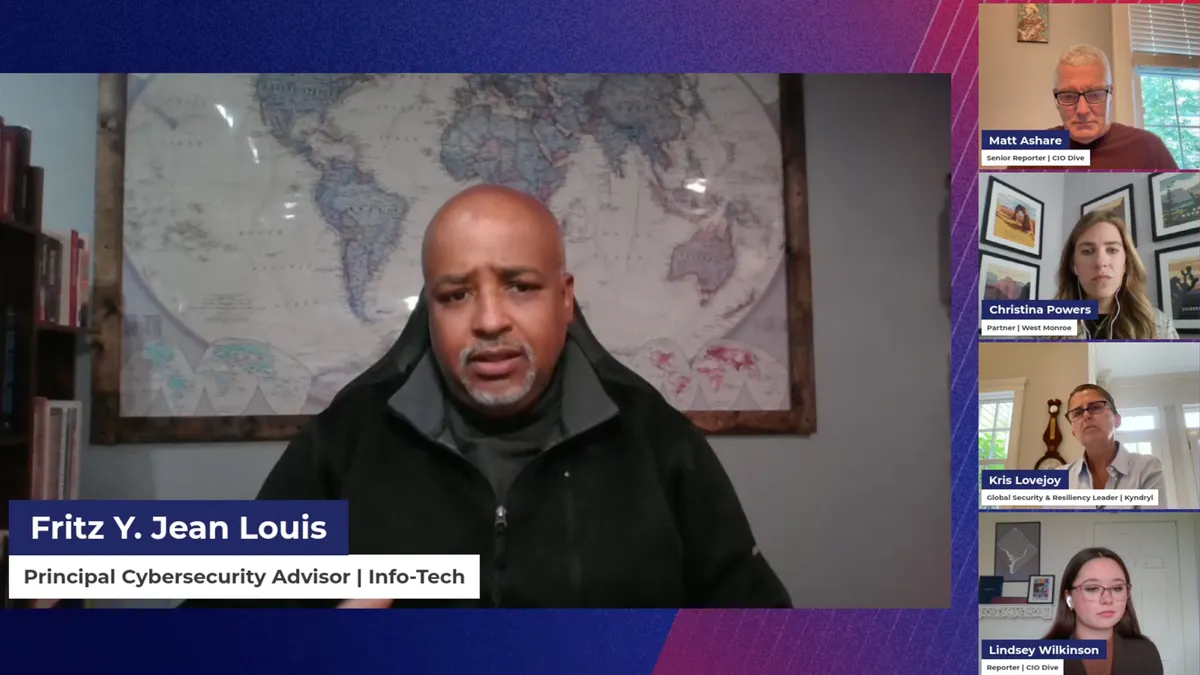CIOs today are more than just technologists – they’re catalysts for enterprise transformation. And as innovation becomes an urgent business imperative, the ability to forge fruitful partnerships is more critical to success than ever.
“The question for organizations now isn't whether to partner for innovation – it's how to partner effectively,” says Tata Communications’ SVP and Head of Americas region, Dino Trevisani. “The best results come from deep relationships with experts you trust, who understand your enterprise’s cultural DNA as well as your business goals.”
Raj Singh, global CIO at automotive technology company Visteon, notes: “For us, innovation is about bringing changes to how we execute our processes and how we create business value. It requires a lot of communication and collaboration, and our IT partners are a constant part of that innovation ecosystem.”
Tata Communications has partnered with many global enterprises – such as NVIDIA and Jaguar Land Rover (JLR) – and we’ve seen what drives truly impactful co-innovation. More often than not, business-shaping results are built on three deceptively simple questions:
- Does this solve a specific, real-world problem?
- Will it create new business value – not just cost savings?
- Can you commit to our unique journey, end-to-end?
The strength of a partnership can hinge on how these questions are answered. So, if CIOs want to drive lasting success, they must take the lead early, guiding the process with clarity and intent.
1. Does this solve a specific, real-world problem?
Successful innovation is never generic. It starts with a deep understanding of the customer's context – their processes, people and pain points. As Visteon’s Raj Singh observes: “It always starts with the problem statement. What are we trying to solve? We have to stay laser-focused on that.”
Tata Communications’ collaboration with automotive giant JLR is a case in point. JLR’s vehicles, such as Range Rover and Discovery, are famously used in some of the most rugged and remote parts of the world – far away from urban centers, let alone car dealerships or repair shops. Yet modern drivers expect constant access to mobile services for their route mapping, feature updates, and family entertainment.
Working together, Tata Communications developed connectivity services that now empower JLR’s next-generation vehicles, wherever they are, across 120 countries. This continuous connectivity solves a definite need for drivers. But it also addresses JLR’s challenge of delivering a best-in-class customer experience, while handling the 2.5 terabytes of data its fleet of connected vehicles generates every day.
2. Will it create new business value – not just cost savings?
The best IT innovations don’t just improve efficiency. They open up new revenue streams, strengthen customer relationships and build long-term resilience. Look at Tata Communications’ partnership with AI pioneer NVIDIA.
That joint initiative involves integrating cutting-edge NVIDIA solutions into Tata Communications’ AI offerings, not merely to improve performance levels but to create brand new offerings that disrupt the status quo. Through its AI Studio, a groundbreaking, all-in-one platform, distributed data management tools, and low-latency edge computing platform, Tata Communications is transforming how businesses use AI.
Together, the two enterprises are helping customers to build innovative products and establish whole new ways of working – all through the power of AI. It’s an example of how the best CIOs can look for innovations that change the business model – not just the bottom line.
3. Can you commit to our unique journey, end-to-end?
Every CIO knows innovation rarely follows a straight line. Priorities shift, stakeholders evolve and technical hurdles appear. What matters is having a partner who can adapt and stay committed through it all. That process has defined our work with customers ranging from financial services providers to hardware firms and enterprise software platforms.
“Our approach is very different to other vendors out there – we bring a human touch,” says Tata Communications’ Dino Trevisani. “We spend time getting to know a customer’s organization, learning what makes it tick, and aligning on what it wants to accomplish. With that insight and understanding, we’re on board for the full innovation journey – no matter the timeline or the unexpected obstacles.”
Lalit Kumar, Tata Communications’ head of enterprise business in the West Coast region, describes the co-innovation process with one major software customer: “What started with a powerful problem statement and a workshop session ultimately became a substantial new product that took a year to develop and integrate into the customer’s entire ecosystem. That kind of extensive engagement is what’s needed to drive transformative ideas that differentiate the business.”
Meaningful innovation rarely comes from simple plug-and-play fixes. In Tata Communications’ experience, it takes deep collaboration powered by genuine, human relationships.
Connecting the dots in a complex innovation landscape
More than ever, CIOs are shaping the future of their organizations. As George Michalitsianos, IT leader at manufacturer Ansell, says: “What’s changed in the last few years is that my role is not just about bringing internet access anymore, it’s about helping the business transform processes digitally and making sure it’s secure.”
But transformation doesn’t happen in isolation – it happens through partnership. Sergio Tagliapietra, VP of Information Technology at a global fashion brand, points out: “Once the right partner is identified for a key initiative, the benefits can be substantial, particularly when the partnership is treated as a true collaboration. Organizations shouldn’t expect breakthrough results without offering generous insight and context into their broader objectives.”
By asking the right questions early, you set the stage for innovations that don’t just solve problems – they drive growth, build resilience and redefine what’s possible.
So next time a prospective partner brings you an idea, let your first questions be: Is it real? Is it valuable? Will you see it through? Because the right answers to those questions are where real innovation begins.
To learn more, visit Tata Communications’ website.










